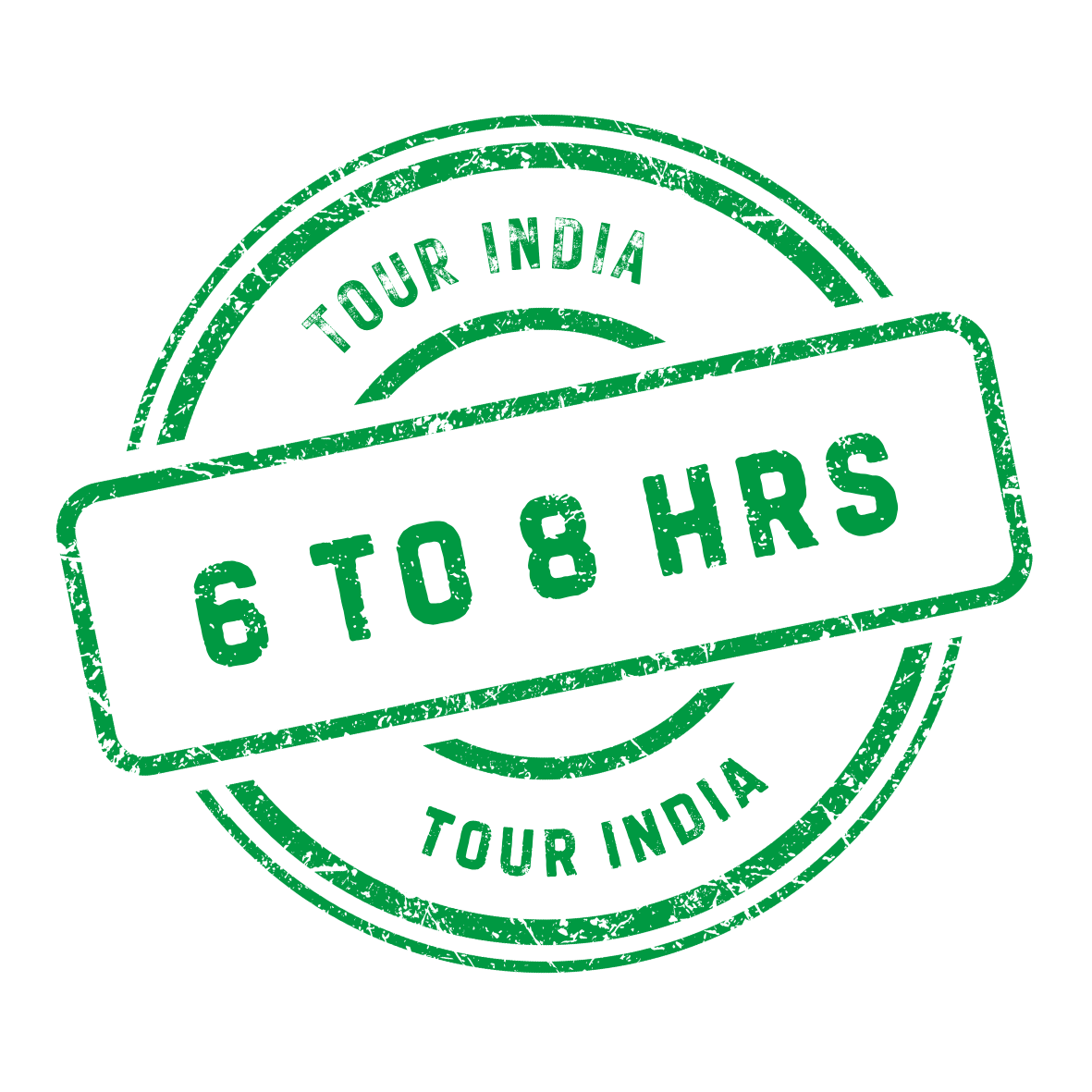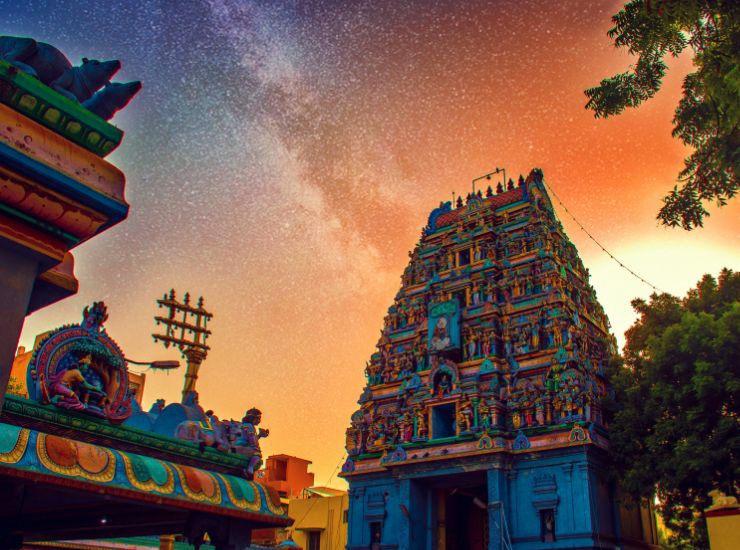Chennai Day Tour
Chennai Day Tour – Explore the Gateway to South India
Discover the perfect blend of tradition, spirituality, and colonial heritage on a full-day Chennai Day Tour. Visit ancient temples, serene beaches, historic churches, and cultural landmarks. This private sightseeing experience is ideal for travelers seeking a deep and authentic introduction to the cultural capital of Tamil Nadu.
Chennai Fact File
- Area 174.00 sq. km
- Population 3,841,396 (1991)
- Altitude Sea level
- Languages Tamil and English
- Best time to visit November to February
- STD code 044

Marina Beach - St. George Fort - Santhome Cathedral - Kapaleeswarar Temple - Parthasarathy Temple & Snake Park
Our Tourist Permit Car / Coach with English / Multi Lingual License Guide will report at your Hotel or Residence at 0900 hrs. Start your tour of Chennai early known as Madras located at the Coromandel Coast of South India. The tour will cover Marina Beach known to be the second longest beach in the world. Saint George Fort built in 1653 AD and it is used as the state government secretariat office, later visit Santhome Cathedral which was built in the 14th & 15th century and is another colonial structure expecting a must see visit. Later visit the Temple Dedicated to Lord Shiva - kapaleeswarar Temple and it is supposed to be the oldest temple in Chennai, also visit the Temple of Lord Krishna known as Parthasarthy Temple. If you are snake lover than do visit the Snake Park which has a large collection of snakes and many other reptiles. Later drive back to your Hotel / Residence.

Capital of the south-eastern state of Tamil Nadu, Chennai is one of the four major metropolitan cities in India. Today, it is hard to believe that a place that was till 1639 just a small fishing village would become such an enormous and beautiful city. Situated on the shores of the Bay of Bengal, Chennai is perhaps the most peaceful and green metropolis in India. Chennai has a number of attractions for the tourists to see. One of them is the beautiful Marina beach, where the blue waters of the Bay of Bengal mingle with the golden sands. The city also has its share of forts and palaces reminding the tourists the glory of bygone eras.
Sightseeing
Chennai was developed as a British trading post, and as such, most of its attractions have a distinct colonial influence. Stretched over an area of 13 km, Marina beach is the second longest beach in the world. The St. George Fort, built in 1653, is currently used as the state government/’s secretariat. Santhome Cathedral was built around 14th/15th century and is another colonial structure worth visiting.
Dedicated to Lord Shiva, the Kapaleeshwar Temple is the oldest temple in Chennai. Another important temple in the city dedicated to Lord Krishna is Parthsarthy temple.
Excursions
While you are in Chennai on a planned holiday, be sure to take some time off and visit the places around. There are ancient temple towns like Mahabalipuram and Tirupati (in Andhra Pradesh), traditional townships and villages that specialise in crafts like Kanchipuram, and golden beaches like Covelong.
Parthsarthy Temple
The temple was built in the 8th century by the Pallava kings of South India. It was renovated by the mighty Vijayanagar kings in the 16th century. The temple, situated in Triplicane, another beach in Chennai and one of the major harbours during Pallava time, is famed for the beauty of its gopuram (arched gateway) and its architecture. The entire locality is fashioned around the temple.
Kapaleeshwar Temple
This temple was constructed in the 13th century and is a living example of the architectural skills of the Dravidians. Situated in the Malaypore area of Chennai, the temple is the nucleus of the local tank market and residential quarters around it. The main entrance facing east is painted in red, blue and yellow with Puranic legends sculpted on the sanctum sanctorum.
Santhome Cathedral
Built over the tomb of apostle St. Thomas, the Santhome Cathedral is an important pilgrimage centre. According to legends, St. Thomas arrived in India from Palestine in AD 52 and died after 26 year. The church was built after a millennium, probably by the Persian Christians, and his remains were moved inside. The church was refurbished in 1606 and made into a cathedral. Again, in 1806, it was rebuilt as a basilica. There is a museum in its premises with a 16th-century map of South Asia.
Fort ST. George
The most powerful symbol of the British Empire in its early days in India, Fort St. George was the first piece of real estate for British in India. For many, it is still unclear that why Sir Day (the founder) choose this place to build this important fort, leaving many other picturesque locations on the vast coastline of the Bay of Bengal. The fort has a grey granite exterior unlike the Mughal forts that has lavish ornamentation and luxury. It housed barracks for the British army, a parade ground, and the oldest church of Chennai—the St. Mary/’s Church.
Marina Beach
The beach extends from Fort St. George all the way to Mahabalipuram. The beach looks spectacular at dusk when the setting sun casts iridescent glow and peddlers sell everything from ice creams to roasted peanuts to balloons. You can also read your future from the fortune tellers and palm readers who lure the visitors by various means. Don/’t try to show your swimming skills here as the sea can get quite rough here.
National Art Gallery
Built in 1906, the gallery is situated in a splendid Indo-Saracenic edifice. The building was initially known as Victoria Memorial Hall and was designed by Henry Irwin. The eminent historian Tillotson described it as one of /”the proudest expressions of the Indo-Sarcenic movement/”. There is a good collection of old paintings and sculptures including Tanjore paintings on glass; Rajput and Mughal miniature paintings; Deccan paintings from 17th century; and handcrafts, metalware, and ivory carvings from 11th and 12th century.
Snake Park
The Snake Park situated in the Guindy National Park in the Raj Bhavan Estate has a large collection of snakes and many other reptiles.
Theosophical Society
The Theosophical Society was founded by Madam Blavatsky and Colonel Olcott in New York in 1875 and moved its headquarters to Chennai in 1882. The society is set in large and tranquil gardens with several shrines of different faiths and a Serene Garden of Remembrance.
Kalakshetra
Kalakshetra, located around 1 km from the Theosophical Society, was founded by Rukmini Devi Arundale for the revival of Indian classical arts and crafts traditions.
Gengi
About 25 km from Chidambaram on the Tindivanam–Thiruvannamalai road lies the town of Gengi. The major attraction out here is a 700-year-old fort constructed by Kone Chiefs. The fort runs over three hills of enormous and steep boulders. It was occupied by Marathas, Mughals, Vijayanagar Nayaks, the French, and the British during different periods of history.
Excursions from Chennai
Covelong
Just 19 kilometres from Mahabalipuram is situated the picturesque beach resort of Covelong, a quiet fishing village with the remains of a fort. Facilities for windsurfing, swimming and water sports are available here. If you are in Mahabalipuram, don’t miss out on a visit to this place.
Kanchipuram
A 65-kilometre stretch of sun-scorched road connects Mahabalipuram to the fabled city of a thousand temples, Kanchipuram. There are 650 stone inscriptions in Kanchipuram belonging to different dynasties. The temples here reflect the maturity and efflorescence of Pallava art and the ornate and often imposing embellishments were produced later by the Chola, Vijayanagara and Chalukyan kings. There is a solemn grandeur, a grandiosity of vision and ornamental excess in the temples here. A disembodied otherworldly stillness impregnates their vast inner domains where time is a captive fugitive. The Ekambaranathar temple, the Kailasanatha temple, Sri Varadaraja temple, Sri Vaikuntaperumal temple… the names stretch endlessly. The city itself is dedicated to the presiding deity, Sri Kamakshi (one with eyes of love) at the Kamakshi temple. In Sanskrit, the word Kanchi denotes girdle, and poets have allegorically characterized the city as a girdle to the earth.
And so it was. A seat of learning that attracted scholars from far-flung corners of the globe. But what has now girdled the earth is the gold-embroidered Kanchipuram silk sari that has been for centuries a prized possession of the South Indian woman. Shops dealing with silk and cotton saris and material line the main street of the town and for a demonstration of the skills of the Kanchi weavers, visit the Weaver’s Service Centre on Railway Station Road
Kanchipuram is the only city in South India to have played such a dominant, decisive and continuous role in the history of the peninsula. At one time, it was the hub of the empire, of pomp and panoply. Today, it is a small place that time has forgotten. Royalty abandoned it long ago and history shifted its allegiance to other more dramatic arenas. And in the quiet interregnum of the centuries when life thundered by elsewhere, the ancient city, wrapped in nostalgia, too proud to change with the times, withdrew from the mainstream. To become what it is today. An Arcadian fastness of beauty. A dreamy detachment and a quaint medievalism, the lasting impression of which one consigns to memory.
Mahabalipuram
Just out of Chennai, roughly 55 km away, is the world-famous town of Mahabalipuram. The Pallava dynasty of Southern India, one of the major lines of kings to rule in India after the Gupta period, made this lovely seaside village their second capital. The place blossomed under the creative forces of that time between the fifth and eighth centuries. Today, the shore temple, the largest bas-relief in the world called Arjuna/’s Penance and the famous and beautiful mandapams are what identify this sleepy town.
Customize Your Chennai Day Tour
This is a private individual tour and can be fully customized to suit your available days, travel preferences, and budget. Our experts are ready to help you create a bespoke tour just for you.
To get started, please contact us with the following details:
- Number of days for touring in India.
- Period of travel (Month of the year)
- Number of people travelling.
- Choice of destination in India (North, South, East, West)
- Choice of Hotels accommodation (Economy, Standard, First Class, Premium)
Send us an email on info@tour-india.net or submit the form with your queries, we will reply you with your tour within 24 hrs. *
East India
West India
North India
South India
Plan Your Journey Today
Ready to explore the wonders of India? Contact us to customize your tour package and embark on a journey of a lifetime.
